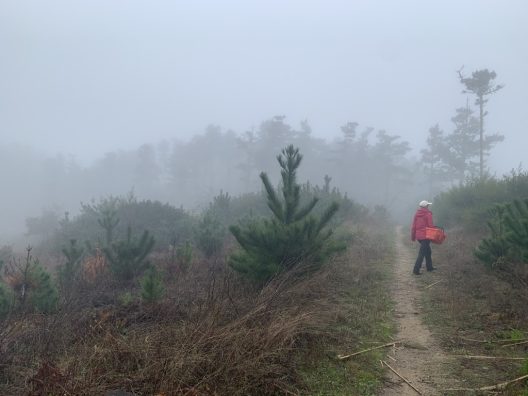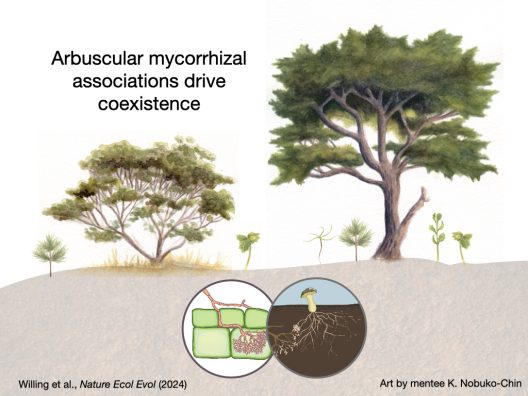New research led by Assistant Professor Claire Willing sheds light on how mycorrhizal fungi shape plant community structure and diversity

A new study led by Assistant Professor Claire Willing, published in Nature Ecology and Evolution, explores how root-associated mycorrhizal fungi influence plant competition, coexistence, and the diversity of plant communities. The research focused on two widespread types of fungi, Arbuscular Mycorrhizal Fungi (AMF) and Ectomycorrhizal Fungi (EMF), which associate with nearly all tree species and profoundly affect forest health, influencing nutrient cycling, carbon storage, and pathogen resistance.
While AMF-associated plants dominate tropical regions and EMF-associated trees are more prevalent in the boreal, both types coexist in temperate zones. Willing and her team hypothesized that this coexistence might result from balancing effects of these fungi on plant hosts.
Using a climate-controlled growth chamber the research team grew hundreds of AMF-associated Baccharis pilularis (Coyote Brush) and EMF-associated Pinus muricata (Bishop pine), with and without their fungal partners, under different competition scenarios. The plants were grown either alone or with competitors of the same or different species.
As expected, the fungi enhanced nutrient uptake and growth rates for their respective hosts. However, the researchers found that while AMF foster greater plant diversity by enabling coexistence between different species, EMF promote monodominance of its host species. This research helps to explain why we often find lower tree diversity in EMF forests compared to AMF forests.

Ultimately, this research ties these findings to Modern Coexistence Theory, showing how often overlooked mycorrhizal communities contribute to broader ecological dynamics and forest diversity. Willing’s lab plans to build off of these findings to explore how shifts in mycorrhizal communities associated with climate change may impact the structure and diversity of future forest systems.